In Memoriam: John Pungente SJ
John Pungente SJ (1939-2023)
by Neil Andersen
On the sad occasion of John Pungente’s passing, I would like to describe some of the media literacy education projects that John participated in and the activities/results of that participation.
Please also see Dr. Alice Lee’s homage at the end of this post.
L to R: Monty WilliamsSJ, unknown, John, unknown, Sarah Crawford, Wayne Wheeler, Adrienne Perera
John was a major figure in Canadian media literacy education and a major influence on the evolution of the AML. After touring the world visiting media literacy educators and writing Getting Started on Media Education (1985), he decided he could make the greatest impact by liaising with the AML. He moved from Winnipeg to Toronto, inserted himself intentionally into the AML and provided strong leadership and encouragement. Principally, John used his international awareness to introduce the AML executive to the ideas and the people who were doing the most powerful work in other countries—mostly the UK and Australia.
Factoid: John spent 1967 in San Francisco on a study leave. Imagine the fun the 28-year-old—looking much like the black and white photo above—had wandering the Haight-Ashbury streets witnessing and analyzing Jefferson Airplane, The Grateful Dead, Hippies and Yippies in the Summer of Love.
John has had a major influence on my life, principally by providing professional challenges that I could not otherwise have found and which gave me opportunities to see and perform on the world stage of media literacy education. While it was often challenging, it was always fun. It has been some time since the start, but I will try to recall as best I can.
Media Literacy Resource Guide (1989)
The Ontario Teachers Federation funded the production and the Ministry of Education funded the promotion/distribution of this historic resource containing dozens of brief media studies activities. John and I were among 14 writers. The book was translated into many languages, including French, Italian and Japanese, and has had a global influence.
Factoid: Even though the book is dated 1989, we wrote it in the summer of 1985—very soon after John joined AML—and taught an Additional Qualifications course with a draft copy in the summer of 1986.
The Ministry stalled the Guide‘s release because it said it wanted to simultaneously release a French version. Unbeknownst to us, the French writers were not just translating the book, but were adding some of their own lessons, which took much longer and angered us because we had no opportunity to vet or even see their additions. Several AML members finally staged a protest outside the Ministry book warehouse with the intention of embarrassing the government into releasing the book, which we had learned was sitting on skids and had been for most of a year. The protest was reported on TV newscasts and the Ministry released the book.
The Ministry also sent pairs from the writing team around the province to introduce the book to school boards. Derek Boles and I went to Kingston and Ottawa. I don’t know which junkets John did.
Second Guelph conference (1992)
John organized and ran the second Guelph conference, Constructing Culture, (Rick Shepherd had run the first one). It was a great success and ran—like most of John’s projects—like clockwork.
He arranged for the attendance of many of the media literacy experts that he had met on his sabbatical: Barrie McMahon & Robyn Quin (Australia), Geoff Leland (New Zealand), Len Masterman (UK) to attend. This had a big influence on Ontario media literacy teachers. They were also all wonderful people.
Scanning Television (1996)
The first main project John involved me in was Scanning Television. John had forged a very congenial and productive relationship with Sarah Crawford, a CHUM TV vice-president in charge of media literacy education. At the time, one of CHUM’s programs was Media Television, which detailed activities in professional media production, marketing and distribution. It was a great series and provided many useful short documentaries of activities ‘behind the curtain.’ John decided the video shorts would support good classroom media literacy learning. Sarah helped negotiate the permissions to use the videos.
Canadian copyright law was very oppressive at the time. Teachers were literally afraid to use video recorded off air for fear of prosecution. So John developed Scanning Television as a response to that oppression. Specifically, Scanning Television would provide a collection of useful legal videos and teaching guides. The guides were my responsibility.
John employed a clever crowdsourcing strategy to select the videos. He curated a large collection of videos and sent it (as a package of VHS cassettes) to many working media studies teachers. They were invited to rate the videos according to how useful they thought they might be for classroom use.
This winnowing provided a smaller collection of videos for which I was asked to provide teaching guides. The final product consisted of four video cassettes and four copies of the teacher’s guide. To our surprise and delight, the collection sold to almost every Canadian High School. It was a runaway best seller.
About 8 years later, John and his partner in the project, Gary Marcuse, imagined a Scanning Television second edition. The plan was to follow the same format: many short videos and four copies of the teacher’s guide. One of the video items was the Zapruder Kennedy assassination Super 8 movie. John asked Kathleen Tyner to write the teacher’s guide for that and a few more items and so Kathleen was listed as a co-author with us on that teacher’s guide.
I also campaigned for the inclusion of some The Awful Truth videos, which were produced by Michael Moore (Roger and Me, Bowling for Columbine, Fahrenheit 9/11, Sicko). Moore was working for Salter Streets Films at the time, a Maritime Canadian company, so we had easy access to the video permissions. I also campaigned for the inclusion of some student-made videos. John said, ‘Why do we want to include students’ videos? Teachers have easy access to those already.’ But I thought that they might make good exemplars.
Gary and John also debated whether or not to produce the second edition as video cassettes and/or DVDs. They invited me to weigh in on this conversation and I said we HAD to produce DVDs because that was the technology of the future (there weren’t any DVD players in schools at this point and no indication of when there might be). So Scanning Television second edition offered a choice of either four video cassettes or two DVDs. Curiously, by the time production had finished, tech evolution had proceeded and most schools selected the DVD versions. If we had only offered cassettes, we likely would have sold many fewer sets.
The second edition of Scanning Television did not sell as well as the first even though I think it was a better collection. Novelty had sold the first collection. Maybe teachers thought that they didn’t need a second collection if the first was still performing well.
The second edition was adapted and sold in Japan, which was fun and exciting. Especially as I was invited to Japan to showcase the collection in Kyoto.
L to R: Wayne Wheeler, Neil, John, Liz Flynn, Carol Arcus, Chris Worsnop
Scanning the Movies (1997 – 2008)
John then thought that he might leverage his relationship with Diane Schwalm at Warner Brothers and Sarah Crawford at CHUM to create a TV series about first-run movies. He selected titles in consultation with Diane. They had to be student-appropriate (not R-rated) and good candidates for box-office success.
John and I would meet at the Warner Brothers’ screening room and watch the advanced screenings with the Toronto movie critics. Then he and I would brainstorm ideas that might be included in a half-hour script. John would use our ideas to write the script and I would make suggestions to sharpen the ideas. Tina Soomet, our producer, hired someone to revise John’s scripts. John had good ideas but could not write prose that ‘rolled tripplingly off the tongue,’ so Robin massaged his sentences into speakable prose.
During this time, I would arrange to see the movie again. I could not confidently write a study guide of reliable, coherent Student Activities based on a single viewing. So over the 11 years and 88 movies, I watched movies 176 times—actually, 175 times because it was impossible to arrange to see The Postman twice prior to the air date. I was very anxious about writing authentic activities based on that single screening, but I did. The study guides were posted to the CHUM website.
For several episodes, John would interview principal actors, directors etc. If the junket was in Toronto, he would meet them at a hotel. In other cases, John would fly to Los Angeles or London depending on where the press junket was staged. He even flew to Australia (15 hours each way from LA) for The Matrix junket. In spite of the fact that John hated flying, he logged so many air miles that he became a prime passenger given all the privileges of advanced boarding, snacks and drinks in the lounge, etc. John liked first-class treatment a lot.
He also had some great interview experiences. When he came back, he would tell me, “George Clooney loved your questions!” He forged a relationship with Clooney because Warner’s was Clooney’s preferred studio, because George-the-film-buff enjoyed talking movies with John-the-film-buff and because our questions were intelligent compared to many others. Possibly his most exciting interview was with Sarah Michelle Geller, the star of Buffy the Vampire Slayer, who was starring in Scooby-Doo. John had become enamoured of the Buffy series, which he saw as the classic clash between good and evil. He had done many workshops and written about the show. So the interview was a dream-come-true and he impressed the hell out of Geller.
John recorded in the Bravo! Studios at first. In subsequent seasons, he tried to find interestingly appropriate remote locations. So he might be in the Toronto Reference library, below the Scarborough Bluffs, in a forest, etc. depending on where his imagination took him.
Every once in a while John would be on the street and recognized by someone who had seen the show. He loved the celebrity.
We did some good shows on some good movies: The Matrix trilogy, all 8 Harry Potter movies and Deepa Mehta’s Water. We infused each show with media literacy concepts that we hoped would help viewers increase their understanding and pleasure.
Summit 2000 (2000)
This global conference was a HUGE project, combining media industry and media literacy delegates and sessions. It was unique for that very reason, and I attended some of the industry presentations.
John rented the Toronto Convention Centre and spent $2M. It was the landmark event we had hoped for. Almost all media literacy educators attended.
We had also hoped to bank some money, but one of the funding sources fell through and we ended up with nothing. Alas again.
Factoid: During the registration, an American media professor emailed John to ask: “I can get to Buffalo by train okay. Do I then transfer to a stage coach to get from the border to Toronto?”
Between the Lines (2001) (https://www.cmreviews.ca/cm/vol8/no1/betweenthelines.html)
Between the Lines is possibly the best of our work. I say this because it allowed us to imagine widely and the product was highly interactive. Unfortunately, its technology was also its undoing.
John had liaised with Lief Storm, a programmer/designer in Regina, to create an interactive media production studio-on-a-computer-screen. Lief had a grant from the Saskatchewan Ministry of Education to produce learning modules. The Ministry wanted them to have a strong production component, which we liked. This was a time when computer-generated media was possible and exciting, but very expensive and beyond any school’s budget.
So the concept was that Between the Lines would be a set of virtual studios, some with print, some with video, etc. John and I met and shaped the project to cover as many media and media literacy concepts as possible. In one, students were offered many video clips of a simulated protest event and invited to edit the clips into a video news report. Depending on how they edited the clips, the report would be biased in favour of the protesters or in favour of the company being protested.
The final product contained 8 modules. It was well-received. Lief contracted with the National Film Board to distribute the discs nationally. (I do not recall any additional monies arising from this expanded distribution arrangement.)
I was very happy with the disc set and the positive critical and sales responses.
Then the wheels fell off.
The MAC OS portion of the discs performed just as well as we expected and continued to do so. But Microsoft kept modifying its Windows operating system every few months without warning, and each time it did, the Windows OS would not load the files. The NFB had to recall the CDs, revise the programming, burn a new set of CDs and send them out to the schools. After about the 4th iteration of this runaround, the NFB stopped servicing the uncooperative discs and selling the discs. A great idea and a successful learning tool was unintentionally sabotaged by tech evolution. Alas…
Inside Plato’s Cave (2008)
John and Gary Marcuse wanted to re-purpose the Scanning Television videos. He asked media teachers to write lessons based on many of the videos. Then he asked Carol Arcus and me to revise the lessons to give them more structure.
John and Gary teamed up with Athabasca University—an online university headquartered in Alberta—to deliver the course. It was a good course, but the enrolments were low because completing it could enhance teachers’ teaching practice, but not their accreditation.
John asked Carol and me to appeal to the Ontario College of Teachers to accredit the course. He wanted the course to be designated an Additional Qualifications Course. There were no other Ontario media literacy courses for teachers at the time. Carol and I had a meeting at OCT. We got the distinct impression that the accreditation was denied because the course originated from Alberta, i.e., NOT an Ontario course. We explained that everyone involved with the course, including ourselves, were Ontario educators. Alberta was just the location of the online distribution/administration. But alas. Plato’s Cave languished for a while, then disappeared.
To be fair, Inside Plato’s Cave did a good job of using its videos to teach media literacy concepts, but it didn’t teach teachers how to teach media literacy to students, at least not without using the Scanning Television videos as content. So maybe the OCT decision wasn’t as spiteful as it seemed.
——————————————————————————————————————————
John was clearly involved in a variety of powerful projects, most of them of his own engineering. He saw and took opportunities when he could, and created many of those opportunities. John’s understanding of media literacy education was comprehensive and he shared it often and gladly. In addition to those described above, John authored or co-authored several books on media literacy education (Meet the Media (1990)); More than Meets the Eye: Watching TV Watching Us (1999) and some that combined media literacy with Catholic theology (Finding God in the Dark: The Spiritual Exercises of St. Ignatius Go To The Movies (2004). John also guested on the CBC radio program Definitely Not the Opera, another example of how he took every opportunity to encourage media literate thinking.
The AML is in John’s debt for his leadership, counsel and encouragement, and I am one of his luckiest beneficiaries. John is a great example of the excellence that is possible when someone makes the best of every opportunity.
John received the 2014 Medium and Light Award, which recognizes the religious dimensions of the life and work of Marshall McLuhan.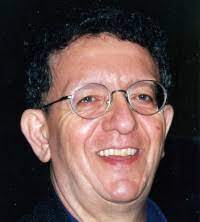
Professor Emeritus
Hong Kong Baptist University
John was one of the important media literacy pioneers, not only in Canada but also in the world. When I was a doctoral student and collected data in Toronto for my thesis in the 1990s, he offered me great support. I learned a lot from him. He always emphasized that media literacy initiatives must be “bottom-up,” and connecting media literacy advocates from different organizations is important.
His work and AML’s practice inspired me to set up the Hong Kong Association of Media Education with educators interested in media literacy. We promoted media literacy in the city and tried to connect with different NGOs to launch media education programs. I also shared his experience of the Jesuit Communication Project with a local Christian organization (Society for Truth and Light). This organization set up a media literacy corner in its office and has launched media literacy programs for many local schools.
John was a great media literacy practitioner, teacher, and mentor. I appreciate his passion and wisdom.
I will really miss him.


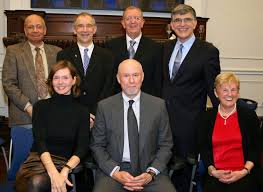


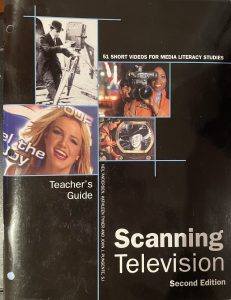
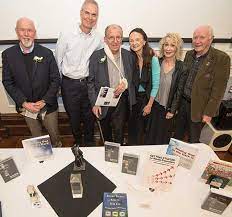
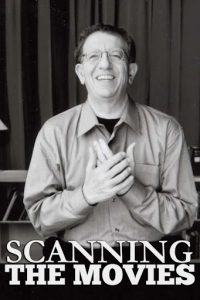
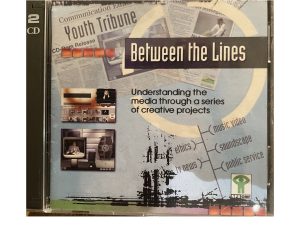
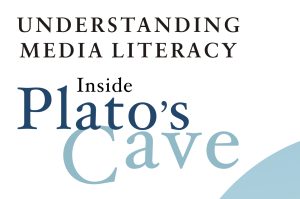


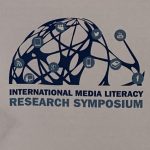
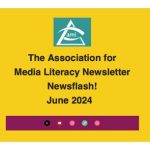
What a beautiful testament to John, Neil. Thank you for creating this record of his legacy, his life’s work as a dedicated Jesuit educator, media educator , prophet, colleague, friend.